#Siberian crane
Photo

ふつうは見えないはずの黒い羽をなぜか知らんけど見せてくれてて、ありがとうと思いました
@天王寺動物園
14 notes
·
View notes
Text
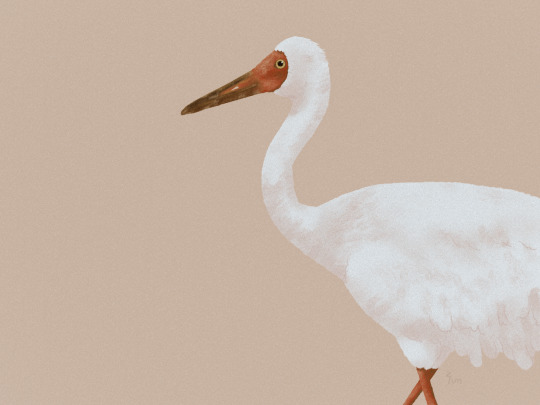
❙ 𝟮𝟬𝟮𝟰 𝗗𝗮𝗶𝗹𝘆 𝗣𝗿𝗮𝗰𝘁𝗶𝗰𝗲 𝗣𝗿𝗼𝗷𝗲𝗰𝘁 ❙
January 1, 2024
━━━━━━━━━━━━━━
✦ 白鶴
英文名稱 ❘ Siberian Crane
保護狀態 ❘ 極危 CR
成鳥幾乎全身雪白,展翅露出黑色的飛羽。
粗長而直的喙,修長的頭和腳。
遷徙距離最長的鶴,台灣曾有迷鳥來訪。
因遷徙路徑與棲地的破壞而族群數量減少。
━━━━━━━━━━━━━━
Siberian Crane
Conservation status : Critically Endangered
Adult birds are almost entirely snow-white, with black flight feathers visible when they spread their wings. They have a long, straight bill, and their head and legs are slender. They are the crane species with the longest migration distance. Their population has decreased due to the destruction of migration routes and habitats.
━━━━━━━━━━━━━━
0 notes
Text
For my illustration class we had do to a “game-book” for young children (who don’t know how to read yet), and I chose to do a leporello that could be ‘read’ in every directions :) I’m very happy with how the two illustrations turned out so here they are !

one side is animals from Siberia

the other is animals from australia (can you tell I love drawing animals-)
Lines and sketches below :))




#I don't know what children that young like to read but I know kid me would have loved this so that's what matters :)#I did this (and other things) in three days omg this was very short#cuttlefish#koala#every koala looks like danny devito I'm sorry-#cassowary#kangaroo#crocodile#tiger#siberian tiger#bear#grizzly bear#polar bear#wild sheep#crane#salmon#art#my art#art school#Illustration#digital art#leporello#original art#artist on tumblr
15 notes
·
View notes
Note
if the Kattii were show cats ... what cat breeds would they be?
i've been rotating this ask in my brain all day and now I have some answers (also gonna introduce yall to some more characters aside from Oak and Red)
Also this post got so long I put it under a readmore
Oak would be an ebony tortoiseshell Oriental Shorthair:

its got the shape, the skinny, the speed - and also the colouring
Red would be either a red laperm:
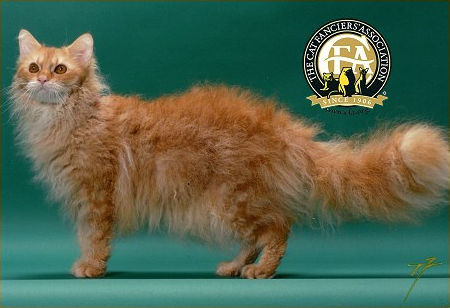
or a longhaired red Selkirk Rex:

because red and also fluffy!
Thyra, (new character), would be a black smoke norwegian forest cat

Dark would be an ebony and white Oriental shorthair
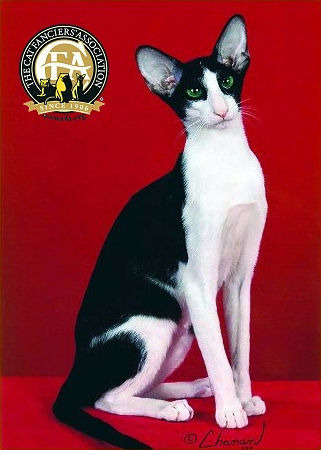
Pigeon is a dilute tortoiseshell oriental cat but in longhair:

Grey (Red's brother) is a blue tabby and white Maine Coon:

Storm is a silver tabby and white Maine Coon

Rapana is a flame point Birman
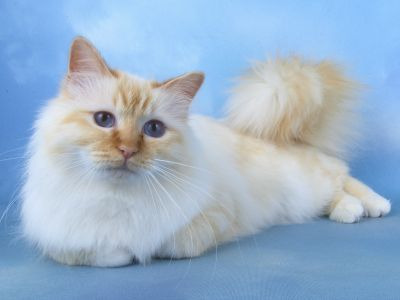
Thunder is this cat, a silver patched tabby and white Maine Coon
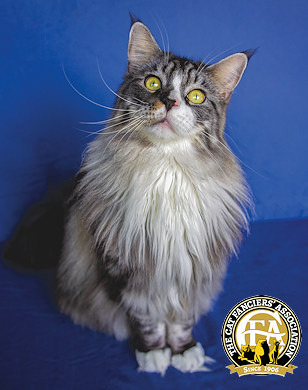
Crane is a lilac point Balinese

This lilac lynx point Balinese specifically is Marrah:
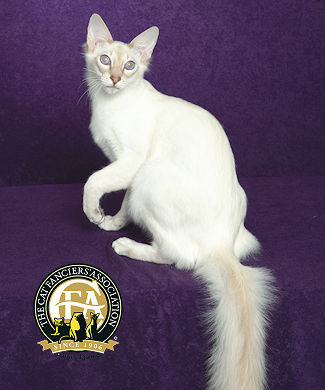
every single Canopy Kattus is a Bengal


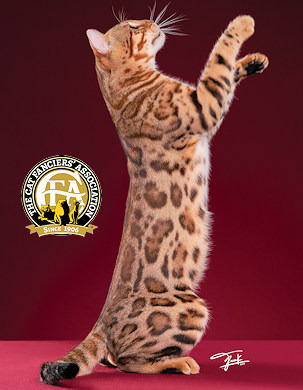
Every single Cordillera is a siberian of various hues of grey

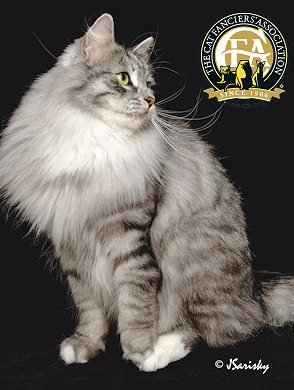
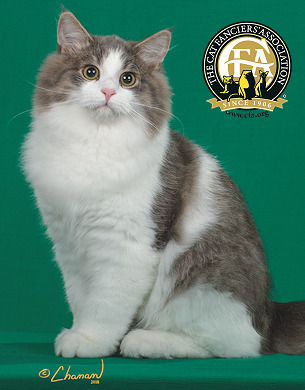
Cactus Kattii are some form of abyssinian or ocicat
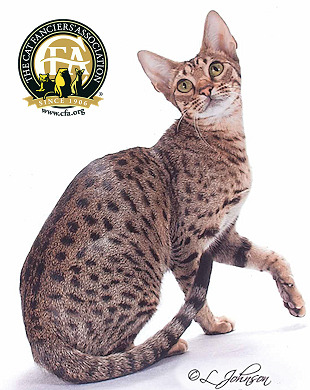
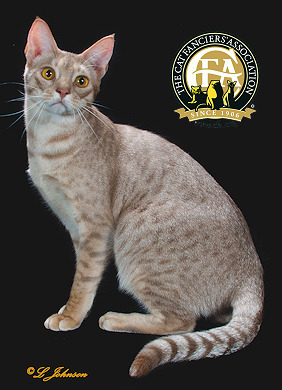

Most Claw Kattii are Oriental cats of some form, e.g. Balinese, Siamese, Oriental Shorthair/longhair



And most Court Kattii are LaPerms or Selkirk Rex
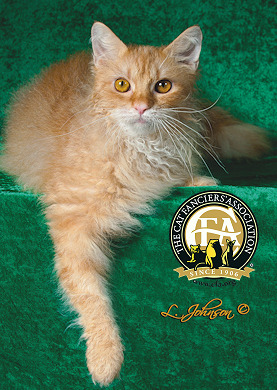


I got 95% of these images from the Cat Fancier's Association, which is literally a lifesaver for stuff like this :)
#worldbuilding#felinia: oak#ask#answered#anon#laperm#selkirk rex#balinese#siamese#oriental shorthair#oriental longhair#abyssinian cat#siberian cat#bengal#bengal cat#maine coon#birman cat#norwegian forest cat#felinia: cordillera#felinia: claws#felinia: cactus#felinia: court#felinia: canopy#felinia: red#felinia: crane#felinia: marrah#felinia: pigeon#felinia: dark#felinia: thunder#felinia: rapana
11 notes
·
View notes
Photo

The Nerge: Hunting in the Mongol Empire
The peoples of the Mongol Empire (1206-1368 CE) were nomadic, and they relied on hunting wild game as a valuable source of protein. The Asian steppe is a desolate, windy, and often bitterly cold environment, but for those Mongols with sufficient skills at riding and simultaneously using a bow, there were wild animals to be caught to supplement their largely dairy-based diet. Over time, hunting and falconry became important cultural activities and great hunts were organised whenever there were major clan gatherings and important celebrations. These hunts involved all of the tribe mobilising across vast areas of steppe to corner game into a specific area, a technique known as the nerge. The skills and strategies used during the nerge were often repeated with great success by Mongol cavalry on the battlefield across Asia and in Eastern Europe.
Hunted Animals
The Mongols, like other nomadic peoples of the Asian steppe, relied on milk from their livestock for food and drink, making cheese, yoghurt, dried curds and fermented drinks. The animals they herded - sheep, goats, oxen, camels and yaks - were generally too precious as a regular source of wool and milk to kill for meat and so protein was acquired through hunting, essentially any wild animal that moved. Animals hunted in the medieval period included hares, deer, antelopes, wild boars, wild oxen, marmots, wolves, foxes, rabbits, wild asses, Siberian tigers, lions, and many wild birds, including swans and cranes (using snares and falconry). Meat was especially in demand when great feasts were held to celebrate tribal occasions and political events such as the election of a new khan or Mongol ruler.
A basic division of labour was that women did the cooking and men did the hunting. Meat was typically boiled and more rarely roasted and then added to soups and stews. Dried meat (si'usun) was an especially useful staple for travellers and roaming Mongol warriors. In the harsh steppe environment, nothing was wasted and even the marrow of animal bones was eaten with the leftovers then boiled in a broth to which curd or millet was added. Animal sinews were used in tools and fat was used to waterproof items like tents and saddles.
The Mongols considered eating certain parts of those wild animals which were thought to have potent spirits such as wolves and even marmots a help with certain ailments. Bear paws, for example, were thought to help increase one's resistance to cold temperatures. Such concoctions as powdered tiger bone dissolved in liquor, which is attributed all sorts of benefits for the body, is still a popular medicinal drink today in parts of East Asia.
Besides food and medicine, game animals were also a source of material for clothing. A bit of wolf or snow leopard fur trim to an ordinary robe indicated the wearer was a member of the tribal elite. Fur-lined jackets, trousers, and boots were a welcome insulator against the bitter steppe winters, too.
Continue reading...
102 notes
·
View notes
Text
i love how some dorms have certain theming in their animal kigurumi.
like Frostheim is arctic animals (polar bear, orca, siberian husky, penguin), Hotarubi is native Japanese animals (red-crowned crane, tanuki, koi fish), Vagastorm is stray animals you can find roaming around (dog, cat, raccoon).
i couldn't tell other dorms tho. i guess Sinostra is exotic(?) zoo animals? (white tiger, peacock..... sea otter?)
#like taiga being a white tiger is obviously a play on his name.... but i couldn't tell what he has in common with romi and ritsu......#tokyo debunker#i need the shirokumarai jin sticker so bad it's unreal
73 notes
·
View notes
Text
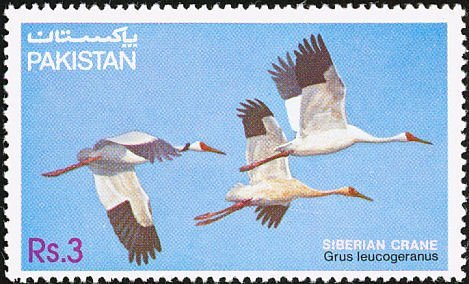
a 1983 Pakistani stamp depicting Siberian cranes
[id: a postage stamp with a realistic illustration of three Siberian cranes. they are depicted mid-flight. end id]
408 notes
·
View notes
Text
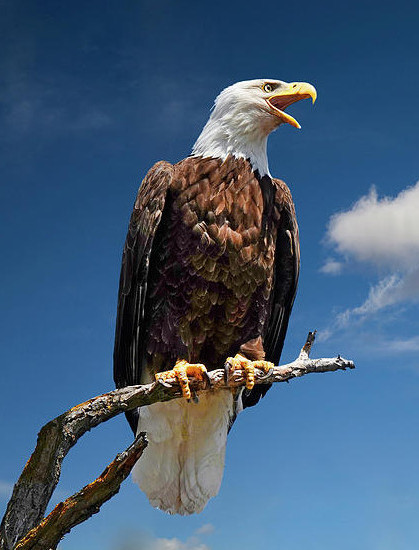
Legends and myths about trees
World tree - the source of wisdom of the ages
The world tree is a motif present in several religions and myths around the world. It is represented as a colossal tree which supports the heavens, thereby connecting the heavens, the terrestrial world, and, through its roots, the underworld.
Many Eurasian mythologies share the motif of the "world tree", "cosmic tree", or "Eagle and Serpent Tree". More specifically, it shows up in "Haitian, Finnish, Lithuanian, Hungarian, Indian, Chinese, Japanese, Norse, Siberian and northern Asian Shamanic folklore".
The World Tree is often identified with the Tree of Life, and also fulfills the role of an axis mundi, that is, a centre or axis of the world. It is also located at the center of the world and represents order and harmony of the cosmos. Each part of the tree corresponds to one of the three spheres of the world (treetops - heavens; trunk - middle world or earth; roots - underworld) and is also associated with a classical element (top part - fire; middle part - earth, soil, ground; bottom part - water).
Its branches are said to reach the skies and its roots to connect the human or earthly world with an underworld or subterranean realm. Because of this, the tree was worshipped as a mediator between Heavens and Earth. On the treetops are located the luminaries (stars) and heavenly bodies, along with an eagle's nest; several species of birds perch among its branches; humans and animals of every kind live under its branches, and near the root is the dwelling place of snakes and every sort of reptiles.
A bird perches atop its foliage, "often .... a winged mythical creature" that represents a heavenly realm. The eagle seems to be the most frequent bird, fulfilling the role of a creator or weather deity. Its antipode is a snake or serpentine creature that crawls between the tree roots, being a "symbol of the underworld".
The imagery of the World Tree is sometimes associated with conferring immortality, either by a fruit that grows on it or by a springsource located nearby. In some descriptions this "water of life" may also flow from the roots of the tree.
The world tree was an important element in shamanistic worldview as well, and it is said that the giant bird ... hatches shamans in the branches of the World Tree.
Some species of birds (eagle, raven, crane, loon, and lark) are revered as mediators between worlds and also connected to the imagery of the world tree. Another line of scholarship points to a "recurring theme" of the owl as the mediator to the upper realm, and its counterpart, the snake, as the mediator to the lower regions of the cosmos.
Northern Eurasian and Central Asian traditions wherein the World Tree is also associated with the horse and with deer antlers which might resemble tree branches.
Some scholars have pointed out that, from the perspective of evolutionary biology, the concept of a world tree may have originated in human thought. This is because our ancestors lived in trees for about 60 million years, and for them the trees were everything in the world. This is why the collective unconscious that the world is made of giant trees has remained with us to the present day.
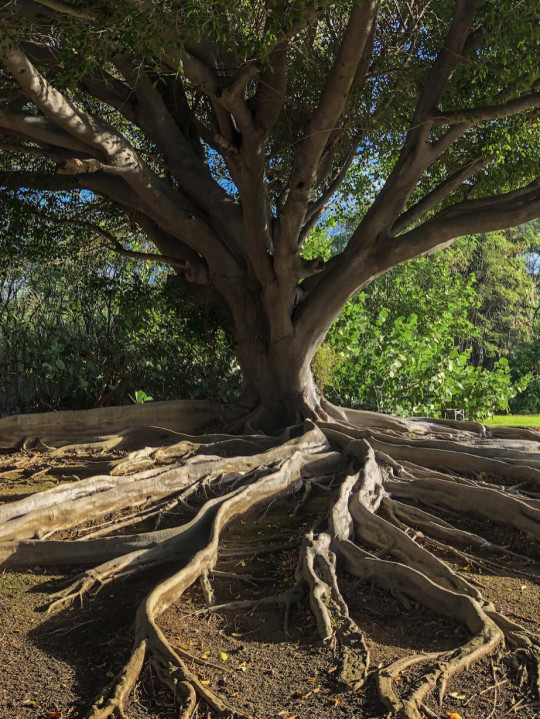
木にまつわる伝説・神話
世界樹 〜 時代の叡智の源
世界樹は、世界中の宗教や神話に見られる概念、モチーフである。天を支える巨大な木として表現され、それによって天と地上世界、そしてその根を通して冥界をつないでいる。
多くのユーラシア神話が「世界樹」「宇宙樹」「鷲と蛇の樹」というモチーフを共有しているとされている。具体的には、「ハイチ、フィンランド、リトアニア、ハンガリー、インド、中国、日本、北欧、シベリア、北アジアのシャーマン伝承」に見られる。
世界樹はしばしば生命の樹と同一視され、また、世界軸、つまり世界の中心や軸の役割を果たす。また、世界の中心に位置し、宇宙の秩序と調和を表している。樹木の各部分は世界の3つの圏(梢-天、幹-中世界または地、根-地下世界)のいずれかに対応し、古典的な元素(上部-火、中部-地、土、地面、下部-水)にも関連している。
その枝は天空に届き、根は人間界や地上界と地下世界や地底界をつなぐと言われている。そのため、この木は天と地を結ぶ媒介として崇拝された。梢には星や天体があり、鷲の巣がある。枝には数種類の鳥がとまり、枝の下には人間やあらゆる動物が住み、根の近くには蛇やあらゆる爬虫類が住んでいる。
その葉の上にとまる鳥は、「しばしば......翼を持つ神話上の生き物」であり、天界を表す。鷲は最も頻繁に見られる鳥で、創造主や天候の神の役割を果たしているようだ。その対極にあるのは、木の根の間を這う蛇や蛇のような生き物で、「冥界の象徴」である。
世界樹のイメージは、そこに生る果実や近くにある泉によって不老不死をもたらすことと関連付けられることもある。この「生命の水」は木の根からも湧き出るという記述もある。
世界樹はシャーマニズムの世界観においても重要な要素であり、「巨大な鳥は......世界樹の枝でシャーマンを孵化させる」ともいわれている。
いくつかの種の鳥(ワシ、ワタリガラス、ツル、ハシビロコウ、ヒバリ)は、世界をつなぐ媒介者として崇められ、世界樹のイメージとも結びついている。また、別の研究では、フクロウは天上界への媒介者であり、それと対をなすヘビは宇宙の下界への媒介者であるという「繰り返されるテーマ」が指摘されている。北ユーラシアや中央アジアの伝統では、世界樹は馬や、木の枝に似た鹿の角とも関連づけられている。
一部の学者は、進化生物学の観点から、世界樹という概念が人類の思考の中に元から備わっている可能性を指摘している。というのも、人類の祖先は約6000万年にわたり樹上で生活しており、その時代の彼らにとっては木々こそが世界のすべてであったと考えられるからである。そのため、この世界は巨大な木で出来ているのだという集合的無意識が、現在の我々に至るまで残っているのだというものである。
#trees#tree legend#tree myths#legend#mythology#folklore#world tree#bird#tree of life#water of life#sharamanism#nature#art#source of wisdom
146 notes
·
View notes
Text

siberian crane + eurasian bullfinches
commission for my dear friend @geneslovee
488 notes
·
View notes
Text




Siberian white crane, peacock, owl and swan taken from 'Illustrated Herbal' (1644) by Zhou Hu and Zhou X.
Colour on silk.
Images and text information courtesy Wellcome Collection.
106 notes
·
View notes
Note
Hi! How are you doing?
What is your favorite kind of bird and why?
( Also pls marry me, your guide to drawing birds is amazing)
(I'm very late in answering messages again, sorry. Also, I'm flattered, but I'm not accepting marriage proposals at the moment)
This is always a tough question... There are so many amazing birds in the world!! How could I choose! But I have a soft spot for some extra cute birds that can be found in my country.
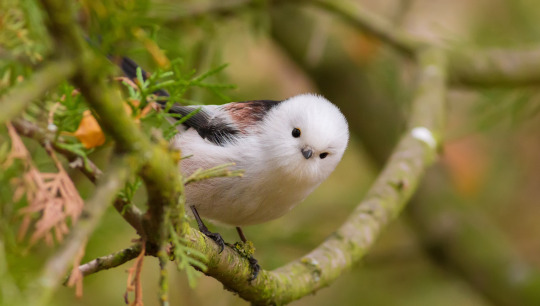
Long-tailed tits are super cute and fluffy, and they have such pretty colors! Seeing one is always a treat!
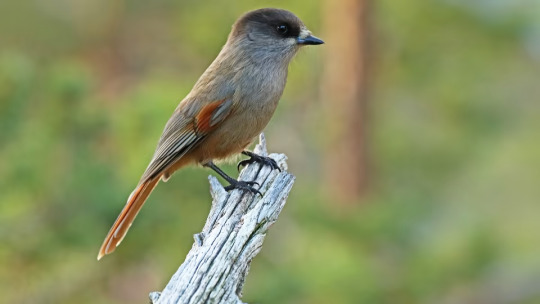
Siberian jays are very curious and friendly, it's always fun to see one! I really like the rusty orange color in their tail, too!
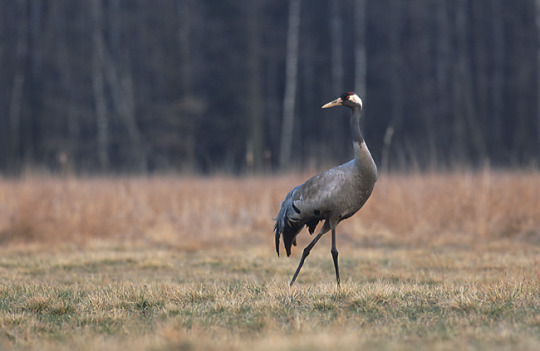
Cranes have such a cool voice that echoes through the air in the spring and autumn. Hearing a crane's call has a very mystic feeling to it, I think
25 notes
·
View notes
Note
•°♤°• Thank you for listening to my other ask! Sometimes I get nervous when other ppl respond to my texts.
Anyways; I like to call this AU Spiritual
For what Spiritual animals will look like, I took inspiration from the Patronus from Harry Potter. But they appear and reappear as they like.
The colors of a Spiritual Animal is depending on their human. An example is Zoro's, who's spirit animal is a green tiger, named Asura. Asuras spiritual form color is like a Patronus, but his color is green (or purple, when Zoro uses/activates his Haki). I like to also think that the more a person's Haki activates/grows stronger, the Spirit Animal does the same.
The Patronus form is basically the spiritual form for the animals. There Fur/Dry + Slimy Scales/Feathers/Moist Skin can change color based on their human.
I have Spiritual companions listed to some of the Strawhats (I will also add ZoLuSan pairing, but with a twist of Allsan).
Vinsmoke "Blackleg" Sanji: (Female) Red Fox or Kit Fox. Named "Blue" or "Oceania"
Roronoa "King of Hell" Zoro: (Male) Siberian Tiger. Named "Asura"
Monkey D. "Strawhat" Luffy: (Male) Barbary lion. Named "Rex" or "Kingsley" (Kingsley's name I got from the fic "Companians". Rex means "King")
Nico "Devil Child" Robin: (Male) Black-Necked Crane. Named "Nox"
"Cat Burglar" Nami: (Male) American Bobtail. Named "Citrus"
"Sniper King" "God" Usopp: (Male) Long-Nosed Armadillo. Named "Aster"
"Iron Man" Franky: (Male) Greater One-Horned Rhino. Named "Atlas"
"Soul King" Brook: (Female; Now Skeleton) Cob Horse. Named "Dia"
-More info soon! Tys for listening ❤️
Wow this sounds so awesome! I can't wait to hear more!
I love how sanji has a fox! What about chopper? Or becase he is a reindeer he doesn't have one?
#one piece#fanfic#sanji#black leg sanji#roronoa zoro#vinsmoke sanji#zoro#straw hat luffy#monkey d. luffy#cat burglar nami#nami#god usopp#ussop#robin#nico robin#franky one piece#soul king brook#spiritual#animals
18 notes
·
View notes
Note
Love, love, love the birds worldbuilding in Himring.
I've actually been digging through links looking for birds that occupy Nan Elmoth and the surrounding area - Himlad, northern Estolad, the banks of the Celon.
Any thoughts about the flying critters living around there?
I’ll start with Himlad!
Flora, fauna, geography and environment masterlist
Himlad was a realm in Eastern Beleriand, bordered on the West by the river Aros and on the East, its tributary, Celon. It means ‘cool plain’ in Sindarin and was described simply as a cold region, likely due to its proximity to the March and thus to the Iron Mountains, the cold fronts of which extend throughout the surrounding regions.
I have imagined it as a steppe environment with an ecology similar to Mongolia. We have little information on environment other than the description of cold but some speculation can be done due to the habitat and through looking at similar real habitats, mostly in Northern Europe and temperate parts of Asia as well as parts of North America which Tolkien was inspired by the prairies in (source: The Flora of Middle Earth)
As always I include world building notes at the end so it’s not just a list of species! And as always please consider the list incomplete! There are so so many birds and I often go back to add more. Feel free to request a more specific prompt to focus on or a more specific family of birds
In the plains and steppe: tawny pipit (migratory, traveling west in the winter), David’s snowfinch, brown accentor, Siberian stonechat (also found in shrubs), rosy starling, swan geese, steppe partridge, pallas’s sandgrouse, great bustard, common cuckoo (migratory), cornrail (migratory, avoids the more arid parts), bearded vulture, crested lark, golden eagle, steppe eagle, imperial eagle, grey faced buzzard, ring necked pheasant, hazel grouse, black grouse, blue rock thrush, common quail, horned owls, gray partridge, desert warbler
Roosting in the sparse trees and shrubs: Yellow browed bunting, common rosefinch, fieldfare, stock dove, common nightjar, little owl, pine bunting
River shores: snow bunting (migratory), red necked crane (migratory), greater painted snipe, osprey, coturnix quail, grey heron, hen harrier, white throated dipper, bank swallow
Other: fork-tailed swift (migratory, mainly aerial), white headed duck, house sparrow, brambling (migratory), song thrush (migratory), black billed caper, northern wren
World building notes:
-Hunting with eagles and other birds of prey is more common than in the other Fëanorian realms (though most utilize birds at least sometimes). Golden and steppe eagles are used primarily by Celegorm and his loyal servants; these are huge and beautiful birds whose use is in some ways a boast of the skill of their handlers
-Celegorm’s knowledge of the language of birds is highly utilized for the defensive and offensive projects of Himlad. Though his followers do not for the most part have this gift they are highly skilled in using tracks, traces and conditions to understand the presence of local birds and the implications thereof. They know what to make of the stray tail feathers of a steppe partridge versus the presence of molt. They know the difference between the tracks of
Of course this applies to other creatures besides birds but as this post is about birds…
-Grouse and quail are sometimes kept for meat and eggs though different species of quail then are kept by the Marchwardens of Doriath. Some of the species are brought from Estolad, Ossiriand or Western Beleriand. The birds are housed in large open pens with small nesting boxes. 
-There are also domestic species of chicken, peacock and quail like birds that are kept for similar reasons. Hybrid species, sometimes with native species, occur naturally and through planned breeding projects during the Long Peacd
-The camouflage of steppe creatures including birds is often used in the fashion of Himlad’s soldiers.
-The various sections of archers among the army and scouts are distinguished by varying types of feathers used in their arrows. For example, Swan goose feather is used for the scouts that patrol the borders and rivers, swift feathers are used among the smaller more specialized groups and golden eagle feathers are reserved for the archers who will be first in the lines of offensive movements.
-Game birds are hunted for meat though all parts are used. Bird bones are actually highly utilized by the host of Himlad, in jewelry and headwear as well as whistles and other tools.
As always please feel free to ask more!
33 notes
·
View notes
Text
#EndangeredSpeciesDay: #DYK Andy Warhol (American, 1928-1987) made two screenprint series in the 1980s focused on threatened animals?
1st was Endangered Animals, 1983:
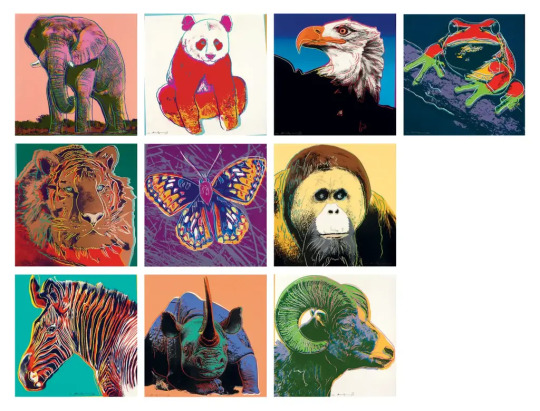
African Elephant, Giant Panda, Bald Eagle, Pine Barrens Tree Frog, Siberian Tiger, San Francisco Silverspot Butterfly, Orangutan, Grevy’s Zebra, Black Rhinoceros, Bighorn Ram.
2nd was Vanishing Animals, 1985:
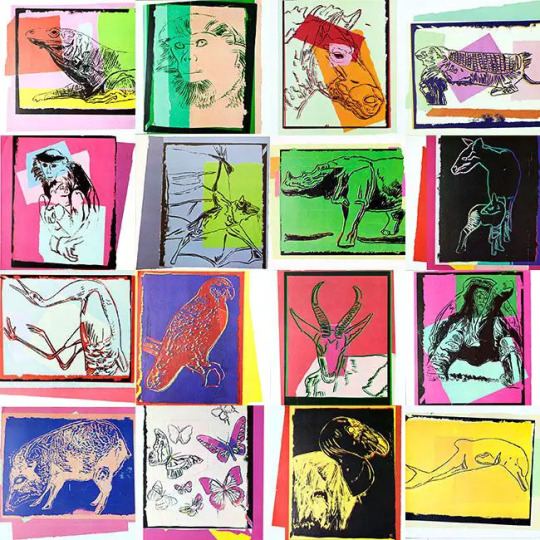
Komodo Monitor, Douc Langur 1, Mongolian Wild Horse, Mouse Armadillo, Douc Langur 2, Bats, Sumatra's Rhinoceros, Okapi, Whooping Crane, Puerto Rican Parrot, Sommerring's Gazelle, Galapagos Tortoise, Giant Chaco Peccary, Butterflies, California Condor, La Plata River Dolphin.
More about both series here:
#Andy Warhol#Warhol#pop art#screenprint#modern art#20th century art#American art#print#1980s#Endangered Animals series#Vanishing Animals series#animals in art#Endangered Species Day#animal holiday
32 notes
·
View notes
Photo

The Nerge: Hunting in the Mongol Empire
The peoples of the Mongol Empire (1206-1368 CE) were nomadic, and they relied on hunting wild game as a valuable source of protein. The Asian steppe is a desolate, windy, and often bitterly cold environment, but for those Mongols with sufficient skills at riding and simultaneously using a bow, there were wild animals to be caught to supplement their largely dairy-based diet. Over time, hunting and falconry became important cultural activities and great hunts were organised whenever there were major clan gatherings and important celebrations. These hunts involved all of the tribe mobilising across vast areas of steppe to corner game into a specific area, a technique known as the nerge. The skills and strategies used during the nerge were often repeated with great success by Mongol cavalry on the battlefield across Asia and in Eastern Europe.
Hunted Animals
The Mongols, like other nomadic peoples of the Asian steppe, relied on milk from their livestock for food and drink, making cheese, yoghurt, dried curds and fermented drinks. The animals they herded - sheep, goats, oxen, camels and yaks - were generally too precious as a regular source of wool and milk to kill for meat and so protein was acquired through hunting, essentially any wild animal that moved. Animals hunted in the medieval period included hares, deer, antelopes, wild boars, wild oxen, marmots, wolves, foxes, rabbits, wild asses, Siberian tigers, lions, and many wild birds, including swans and cranes (using snares and falconry). Meat was especially in demand when great feasts were held to celebrate tribal occasions and political events such as the election of a new khan or Mongol ruler.
A basic division of labour was that women did the cooking and men did the hunting. Meat was typically boiled and more rarely roasted and then added to soups and stews. Dried meat (si'usun) was an especially useful staple for travellers and roaming Mongol warriors. In the harsh steppe environment, nothing was wasted and even the marrow of animal bones was eaten with the leftovers then boiled in a broth to which curd or millet was added. Animal sinews were used in tools and fat was used to waterproof items like tents and saddles.
The Mongols considered eating certain parts of those wild animals which were thought to have potent spirits such as wolves and even marmots a help with certain ailments. Bear paws, for example, were thought to help increase one's resistance to cold temperatures. Such concoctions as powdered tiger bone dissolved in liquor, which is attributed all sorts of benefits for the body, is still a popular medicinal drink today in parts of East Asia.
Besides food and medicine, game animals were also a source of material for clothing. A bit of wolf or snow leopard fur trim to an ordinary robe indicated the wearer was a member of the tribal elite. Fur-lined jackets, trousers, and boots were a welcome insulator against the bitter steppe winters, too.
Continue reading...
33 notes
·
View notes
Text

22th entry of @cursedeya's faketober 2023, today category: Dancer.
CRANSSACK (Crane + Cossack) - Fightning/Ice type.
Is based on a Siberian Russian, and is also inspired by a Russian Cossack and the traditional Cossack dance.


8 notes
·
View notes